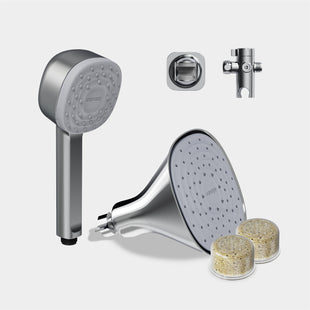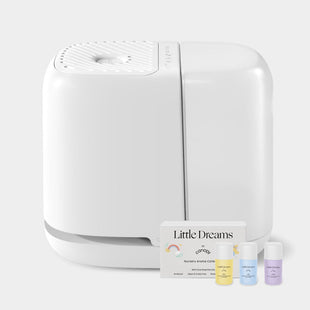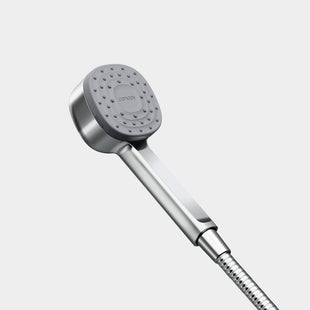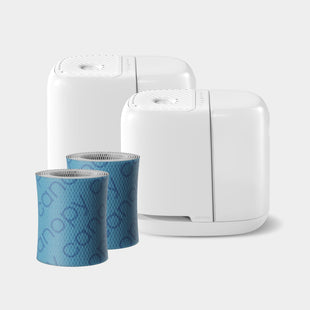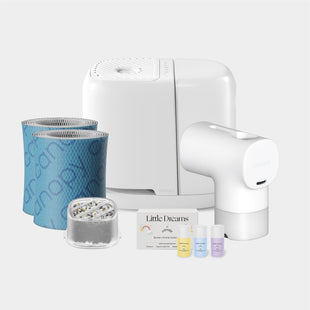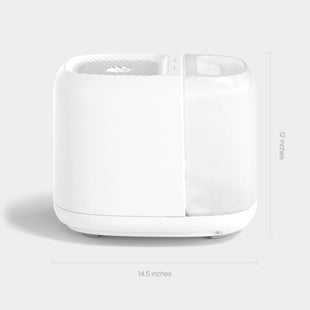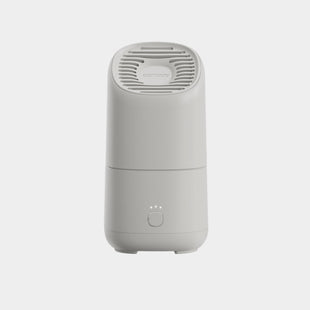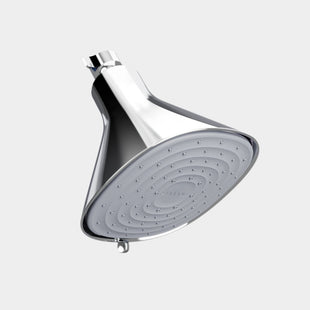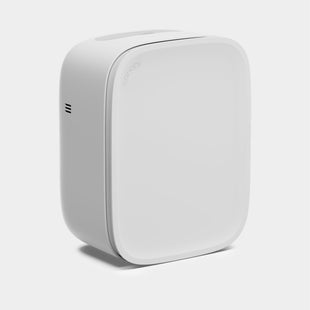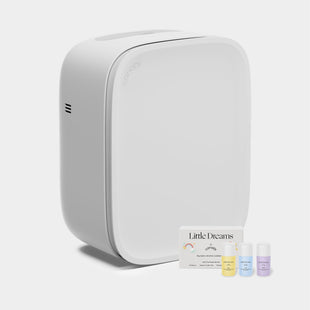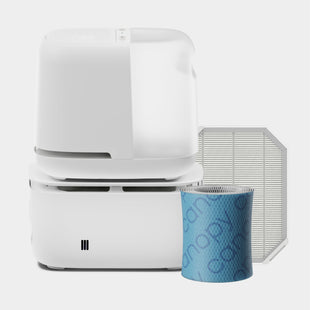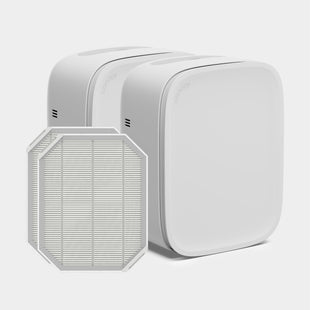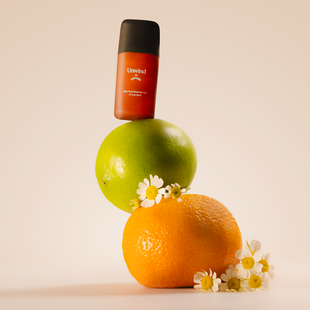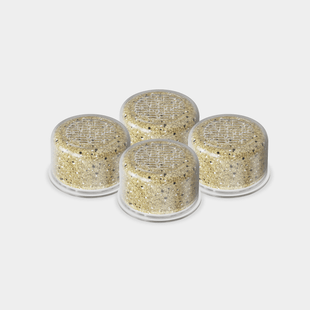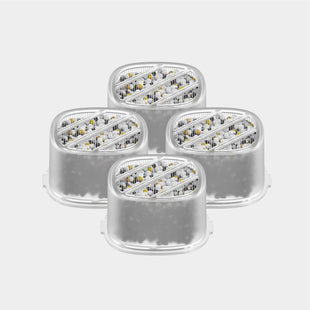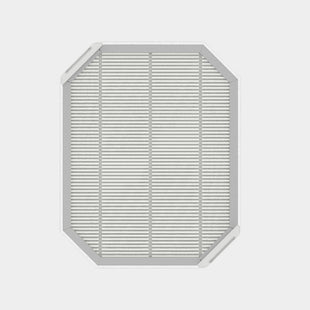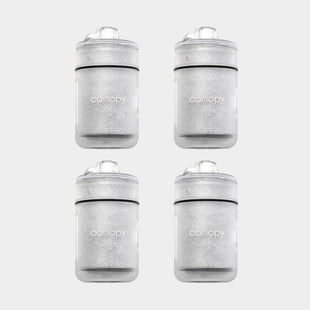This content has been reviewed and updated on April 29, 2024.
Using a humidifier is an excellent way to boost your home’s hydration levels and support breathable, high-quality air. When it comes to maximizing the benefits of this device, there’s an important factor to consider: humidifier placement. The best place to put a humidifier will depend on several key factors, from the type of device you have to the place where you spend the most time in your home.
Here, we break down everything you need to know to decide on the best humidifier placement for your unique needs.
Considerations for Humidifier Placement
First and foremost, you should place your humidifier in the room and specific location that works best for you and your lifestyle. If you spend a good deal of time at home, you might even have multiple humidifiers to keep the air hydrated throughout your house. Or, if you have multiple family members sleeping in separate rooms (such as a baby in a nursery), it makes sense to have a unit for each area.
In addition to the highest concentration of activity, you’ll also want to consider room size, proximity to objects, and safety for you and your family when choosing the best place to put a humidifier.
Highest Concentration of Activity
When deciding on humidifier placement, start by thinking about the areas with the highest level of activity in your home. In other words: where do you (or the person for whom the humidifier is intended) spend the most time? This approach will allow you to maximize the efficiency of your humidifier device, whether you use it for the living room, home office, your bedroom, or your child’s nursery.
On the other hand, you could also place your humidifier in a room or location where you most need humidity. You can use a hygrometer, which can easily be found online or at any home goods store, to survey the humidity levels of your home. If an entire room or section of your home has less than 40% humidity, placing a whole room humidifier in that particular area will ensure the maximum benefits of optimal humidity levels.
Where to Put a Humidifier: In the Bedroom, Baby’s Room, or Elsewhere?
Bedroom

Given that our bodies lose water at an accelerated rate overnight, having a humidifier in the bedroom is always a good idea. You spend between six and nine hours sleeping in your bedroom at night, which makes this space among the most frequently occupied locations in your home. Placing your humidifier in the bedroom can also help to improve the quality of your sleep, particularly if you have sinus problems, asthma, or any number of breathing issues.
Baby’s Room
Placing a humidifier in your child's nursery has several noteworthy health benefits, especially during the winter months when viruses thrive and cold, dry air can aggravate existing skin conditions. You’ll want to be especially mindful about humidifier placement in your baby’s room, though. Situate the device on a high shelf or dresser where both the unit and the cords are out of reach from curious hands. That way, when your child is old enough to start exploring, they’ll still be safe from spills or other mishaps. The humidifier should also be placed far enough away from your child’s crib or bed to avoid exposure to mist. This won’t be a concern with Canopy’s Nursery Humidifier due to its mist-free technology
Common Areas
Sleeping in optimal humidity levels can benefit your skin, respiratory system, and nasal passages all night long. But if you spend a good deal of time elsewhere in your home, it may be worthwhile to consider humidifier placement there, too. For instance, if you work from home, having a small, portable humidifier could keep the air in your home office comfortably hydrated. Similarly, other common areas like living rooms or dining spaces might benefit from an extra boost of moisture, too.
Other Factors to Consider
Room Size
Once you’ve decided on humidifier placement in terms of an appropriate room or space, you now need to determine the right size for your unique area.
Start by determining the approximate square footage of that particular room. You can then decide on a humidifier with sufficient output that matches the size of your room. For instance, if you have a whole room humidifier in your bedroom of 425 square feet, you’ll need a humidifier with at least 425 square foot output.
Canopy's Bedside Humidifier has a 500 square foot output, as does our Nursery Humidifier. These devices will therefore effectively humidify a room with 500 square feet or less. Have an open concept layout or a larger space to hydrate? Our Large Room Humidifier which delivers moisture to twice the space with an output of up to 1,000 square feet.
For a smaller, travel-ready companion that offers personal hydration from room to room, there’s also our Portable Humidifier. While our other models don’t release any mist or vapor, this scaled-down system offers a soothing, temperature-balanced mist, using advanced evaporative technology instead of general heat to produce steam.
Proximity to Objects

With your target room size in mind, you’ll now want to assess the layout of the space and take into consideration any objects that surround your desired humidifier placement location. You'll also have to account for airflow around important fixtures, like doors and windows.
Humidifiers that release mist can lead to an accumulation of water on nearby surfaces. With traditional models, the release of heavy droplets can become an issue in the way of moisture damage or mold development. For that reason, when seeking the best place to put a humidifier that expels mist, you’ll want to avoid electronics, wood fixtures, wood objects or decor, or any other object that could be damaged from moisture. In addition, aim to place your humidifier in a location with sufficient space between your bed, curtains, or any other fabric-laden item that could grow mold from exposure to moisture.
Since Canopy’s Bedside, Nursery, and Large humidifiers are mist-free models that fan pure, hydrated air into your room, you can place them virtually anywhere you have space. You can also boost the hydrating power by pairing your humidifier with a room fan.
Our Portable Humidifier only releases a fine, soothing mist, compared to other models with heavier moisture outputs, but the tips above will still be helpful for settling on optimal placement as you move your device around as needed.
Safety
Lastly, and certainly one of the most important factors to consider when deciding where to place a humidifier in your home is safety. If you have an infant, a small child, or an energetic pet, consider the safest spot to place a humidifier that could not be knocked over or pulled down.
According to the American Academy of Pediatrics (AAP), recommends cool mist humidifiers over warm mist humidifiers or vaporizers. A unit that generates heat is considered a burn hazard since a curious child could touch the heated water tank or pull the device down from a shelf and spill hot water on their hands or face. Fortunately, there’s no need to worry about that with Canopy’s mist-free Nursery Humidifier, and even our Portable Humidifier relies on evaporation instead of heat to hydrate your space.
No matter which parts of your home would benefit from clean, hydrated air that's more comfortable to breathe, Canopy has a safe and convenient solution.

